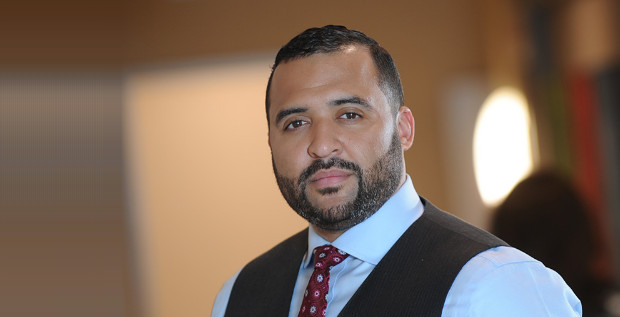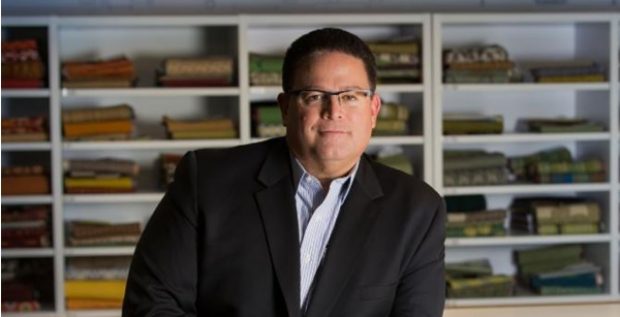William Glazer is the president and CEO of Keystone Property Group. Originally founded as a real estate brokerage firm, Keystone has had iterations an investment firm as well as a development company. Since 2003, the organization has acted as a real estate private equity firm, investing in over 10 million square feet of properties with transactions totaling billions of dollars. In addition to his role as an investor and developer, Bill has served as chairman of Hyperion Bank as well as on the boards of directors for numerous local nonprofits like the Jewish Federation of Philadelphia. Awards he has received include the Philadelphia Business Journal’s 40 Under 40 Award, Ernst and Young’s Entrepreneur of the Year Award, and the Greater Philadelphia Chamber of Commerce Award for Excellence.
Bill spoke with Jeff Mack of Newmark Grubb Knight Frank for this interview.
JEFF MACK: Can you tell us about your beginnings?
BILL GLAZER: Keystone is a company I founded in 1991. This is just out of school. At the time, I was very young. I had no experience and had no rich uncle or rich father or no family money but had enough temerity to think that one day I would build a real estate company, and I set out to do just that.
This is a bit of a bootstrap story from the beginning, and as with most bootstrap stories, we were out of the garage. It literally was out of the garage when I started. I would get both talent and capital along the way in small, incremental pieces. As I grew and made every mistake under the sun, I was making those mistakes through the mid-90s, and as you recall, you could buy anything in the mid90s and make every mistake under the sun. The market at that time would cover your mistakes and still reward you for them on top of that. It wasn’t until the later 90s that we really started getting enough critical mass of people and of capital and of expertise that we started to make some exciting projects, and make them work well on our own merits and not just on the merits of the market beta. Then, you get to discussion around the alpha that a developer or investor brings to an investment, and it’s that alpha that we think is best done when you control the full range of services in a real estate investment—that is, development, management, asset management, capital raising, and leasing. We really prefer to use the best in the business in third-party brokers—and that is why we use Nemark Gribb Knight Frank and that relationship by the way has grown to not just a brokerage relationship and a capital market relationship, but also a capital relationship. Another partnership that is important to us is with the Cantor Fitzgerald guys who have done literally hundreds of millions of dollars of business with us just in the last two or three year..
Q. When did you decide to bring on partners?
A. So, when I started the business in 1991, I was on my own—shouldn’t have been on my own—and I think this is a business about partners. One of the great things that I learned over time is that you need to be a great partner, and to be a great partner you need to bring your own expertise to the table and know your own failings. I eventually figured—I’m still figuring it out—but I eventually started to get a grasp of where I needed strength. So in 1993 I joined with Marc Rash, who’s still my partner today. Doing the math that’s 22 years of being a partner—that’s better than most marriages, so that’s a real strong partnership. Marc’s kind of the yin to my yang. He’s a JD CPA, an exceptionally strong deal maker, but he’s back of house. He likes to raise capital and run basically all of the nuts and bolts of some very complicated structures: legal structuring, financial structuring—he’s superlative at that, which lets me be a deal maker. So I can be the front office guy, and he can be the back of house guy. We’ve since brought in Rich Gottlieb as a partner to augment me, because where I fall down Rich is so much better at being a real deal maker.
Q. Can you give us insight into your acquisition strategy?
Our acquisition strategy has differed very much from REITs, as they’re public and have a different set of masters. As a private acquirer, we look to create value, and when I say “create value” that’s probably an overused term. So, what is it? I’ll use The Curtis as a case study: You have a historic property and we look at it and say, “What could it be? How could it be better?” Other than just adding capital—we always want to to add capital to make very well located properties great. In this case, there was a strip of building that was almost bifurcated from the rest. It was about 35 to 45 feet wide and looked out over not one, but two national historic parks. We said, “Wow this would be an unbelievable residential application.” More to that is that when you come in, when you enter this art museum-quality front entrance into an art museum-quality lobby, there’s an art museum-quality piece: the Maxfield Parish, Tiffany’s Dream Garden, which is 15 feet high by 50 feet wide. It’s extraordinary. It literally is a piece that is awesome, and people come in all the time to view Maxfield Parish’s work. So we say, “Wow, could you imagine coming home every night and have this lobby and this art piece to be your front lobby? How extraordinary would that be?” It’s that kind of aha moment that’s at the root of our acquisition strategy. A good friend of mine put it a little more succinctly. He said, “The great thing about great real estate developers? They have Spidey Sense.



















